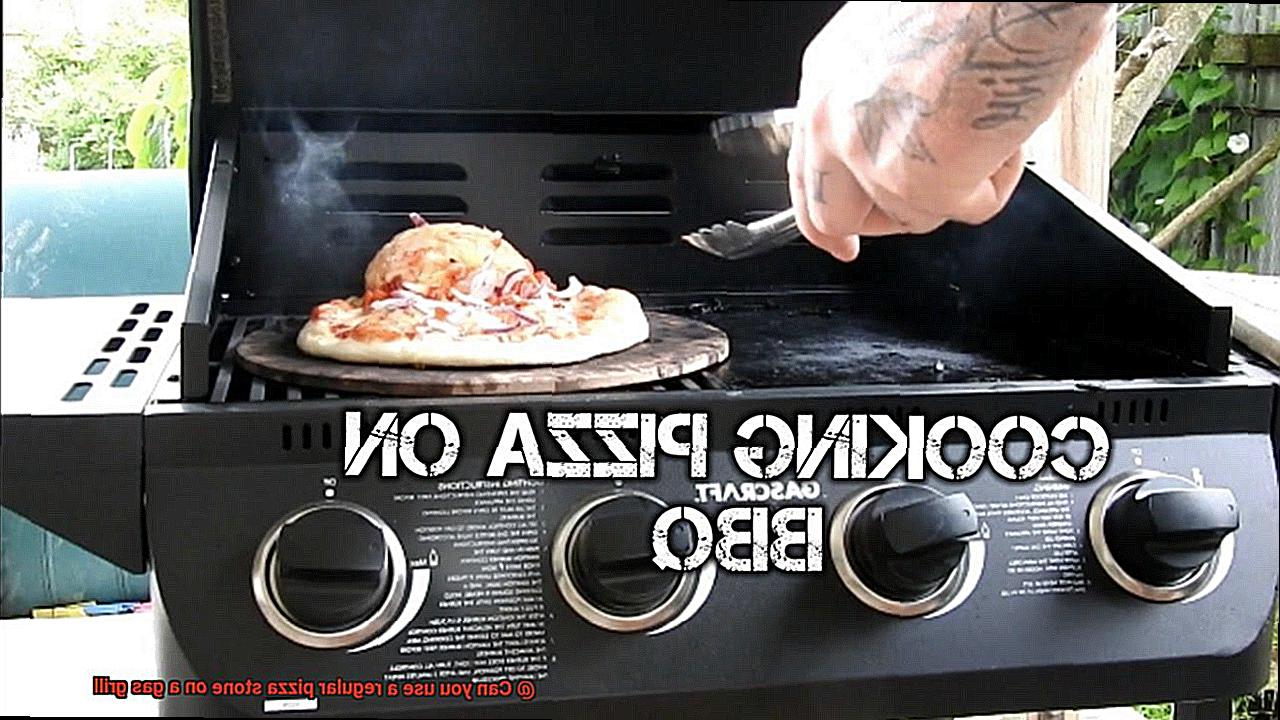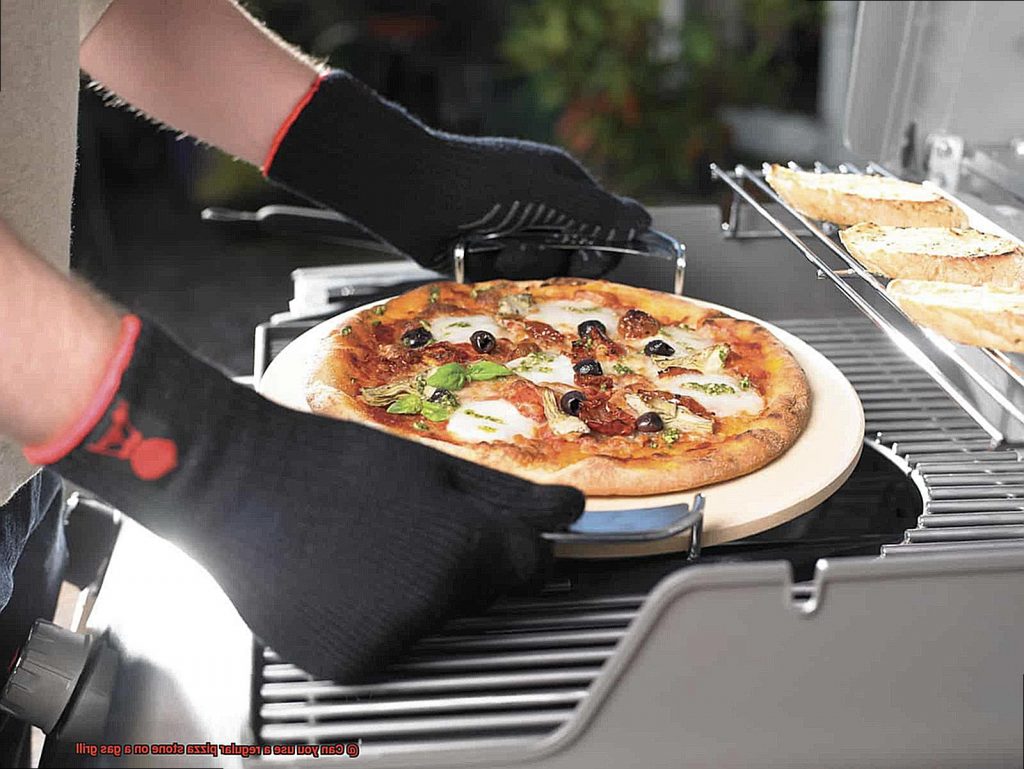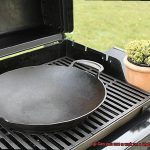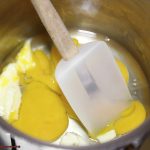Who doesn’t love a delicious, crispy pizza fresh out of the oven? But what if you’re craving that perfect slice on a warm summer day and don’t want to heat up your kitchen? Enter the gas grill pizza stone. It’s the ultimate solution for pizza lovers who want to enjoy their favorite food while soaking up some sun in the great outdoors.
Using a regular pizza stone on a gas grill is a popular topic among cooking enthusiasts. And for good reason. Pizza stones are typically designed for use in an indoor oven, but many people are curious about using them on their outdoor grills. The combination of heat and smoke from the gas grill creates a unique flavor and texture that can’t be replicated in an oven.
But before you start experimenting with your own pizza stone on your gas grill, there are a few things you need to know. In this post, we’ll dive into the benefits, potential issues, and best practices for using a regular pizza stone on a gas grill. So get ready to elevate your pizza game and impress your friends and family with your newfound skills.
Contents
What is a Pizza Stone?
The secret to achieving the perfect crust is a pizza stone. But what exactly is a pizza stone, and how does it work?
A pizza stone is a flat, circular slab made of ceramic, stone, or clay that evenly distributes heat to food placed on it, resulting in a crispy crust and perfectly cooked toppings. Pizza stones come in various sizes, shapes, and materials, but the most common ones are round and made of cordierite or ceramic.
Cordierite is an ideal material for pizza stones because it can withstand high temperatures and thermal shock. It’s also porous, allowing excess moisture to escape from the dough and preventing sogginess. Ceramic pizza stones are more affordable and accessible but may not be as durable as cordierite ones.
To use a pizza stone on a gas grill, it’s essential to preheat it slowly to avoid sudden temperature changes that can cause cracking or breaking. Start with low heat and gradually increase it over 15-20 minutes until reaching the desired temperature. It’s also crucial to ensure that the pizza stone fits snugly on the grill grates without touching the edges or walls of the grill to allow air to circulate around it and prevent hot spots or uneven cooking.
Pizza stones are not just for pizzas; they can be used for other baked goods like bread, cookies, and pastries. However, proper care and maintenance are crucial to keep them in good condition. Avoid using soap or detergents when cleaning them, as they can absorb into the porous surface of the stone and affect its taste. Instead, scrape off any food residue with a scraper or brush and rinse with water. Let it dry completely before storing it.

Can You Use a Regular Pizza Stone on a Gas Grill?
The good news is that you can. But before you start, it’s important to note that not all pizza stones are created equal. Some may not be suitable for gas grills, while others are designed specifically for high-heat cooking. Be sure to check the manufacturer’s instructions before using your pizza stone on a gas grill.
Now that we’ve got that out of the way, let’s get started. Preheat your gas grill to the desired temperature, typically between 400-500 degrees Fahrenheit. Once preheated, carefully place your pizza stone in the center of the grill grates and allow it to heat up for at least 30 minutes. This will ensure that the pizza stone is evenly heated and ready for your dough.
While your pizza stone is heating up, prepare your pizza dough and toppings. When you’re ready to assemble your pizza, carefully place it onto the heated pizza stone using oven mitts or gloves (safety first.).
But here’s where things get tricky – temperature control. Gas grills heat up quickly and can reach very high temperatures, so it’s essential to monitor the temperature of the grill and adjust it accordingly to avoid burning the pizza crust.
As your pizza cooks, keep a close eye on it and use a pizza peel to rotate it if needed. This will ensure even cooking and a perfectly crispy crust.
In summary, follow these steps when using a regular pizza stone on a gas grill:
- Check manufacturer’s instructions
- Preheat gas grill to desired temperature
- Place pizza stone in center of grill grates and allow to heat up for at least 30 minutes
- Prepare pizza dough and toppings
- Carefully place assembled pizza onto heated pizza stone using oven mitts or gloves
- Monitor temperature control and cooking process
- Use a pizza peel to rotate pizza for even cooking
Precautionary Measures to Consider
Using a pizza stone on your gas grill can produce some mouth-watering results, but it’s crucial to take certain precautions for both safety and deliciousness.
First and foremost, choose a pizza stone that is designed for grill use. Using the wrong type of stone can cause cracking or damage due to high temperature fluctuations. Don’t risk ruining your stone or pizza by using the wrong equipment.
Before heating the stone, give it a thorough cleaning with warm water. Avoid using soap or detergent as it can ruin the taste of your pizza. Once clean, preheat the stone for at least 30 minutes to ensure even heating and prevent sticking.
When placing the pizza on the stone, always use a peel or spatula to avoid burning your hands. And speaking of burns, never touch the hot stone with your bare hands. This could result in some serious injuries.
When removing the pizza from the stone, use a peel or spatula and be extra careful not to drop it or touch the hot surface. Remember to allow the stone to cool down completely before cleaning – patience is key.
Benefits of Using a Pizza Stone on a Gas Grill
Firstly, using a pizza stone on a gas grill ensures that your pizza cooks evenly. The stone retains heat well and radiates it evenly, creating a consistent cooking surface for your pizza. No more burnt edges or undercooked centers.
But wait, there’s more – the porous nature of the stone also helps to create a crispy crust. By absorbing moisture from the dough, the stone results in a crust that’s crispier and crunchier. This is especially important when cooking pizza on a gas grill, as high heat can sometimes cause the crust to become soggy. With a pizza stone, you’ll get that perfect combination of crispy crust and gooey cheese.
In addition to the above benefits, using a pizza stone on a gas grill can also help reduce cooking time. The efficient absorption and radiation of heat from the stone can cook your pizza faster than if you were to cook it directly on the grill grates. This means you’ll be able to serve up delicious pizzas to your guests more quickly, without sacrificing quality.
To make sure you get the most out of your pizza stone, remember to choose the right type of stone, clean it thoroughly, preheat it for at least 30 minutes, use a peel or spatula to avoid burns, and allow the stone to cool down before cleaning.
Different Types of Pizza Stones and Their Heat Resistance
When using them on a gas grill, it’s essential to choose a stone that can withstand high temperatures without cracking or breaking. Here are the different types of pizza stones and their heat resistance properties when used on a gas grill.
Ceramic Pizza Stones:
Ceramic pizza stones are the most popular type of pizza stone. They are made from ceramic material and can withstand high temperatures without cracking. Ceramic pizza stones distribute heat evenly, resulting in perfectly cooked toppings and crispy crusts. They come in different shapes and sizes, making them versatile for use on different gas grill models.
Cordierite Pizza Stones:
Cordierite pizza stones are made from a type of clay that can withstand extreme temperatures without cracking or breaking. They are perfect for use on a gas grill because they distribute heat evenly, resulting in crispy crusts and perfectly cooked toppings. Cordierite stones have excellent heat retention properties and can maintain high temperatures for an extended period.
Steel Pizza Stones:
Steel pizza stones are relatively new in the market but gaining popularity among grillers. They are incredibly durable and can withstand high temperatures without warping or cracking. Steel pizza stones heat up quickly and offer excellent heat retention properties for crispy crusts. They also require minimal maintenance and are easy to clean.
Cast Iron Pizza Stones:
Cast iron pizza stones are durable and can withstand high temperatures, making them suitable for use on a gas grill. They may require seasoning before use to prevent sticking, but once seasoned, they provide excellent heat distribution and a crispy crust. Cast iron stones are heavier compared to other types of pizza stones, making them more challenging to handle.
Clay Pizza Stones:
Clay pizza stones are inexpensive and easy to find, but they are not recommended for use on a gas grill due to their low heat resistance. They can crack or break when subjected to high temperatures. Clay pizza stones are suitable for use in ovens but not on gas grills.
Tips for Preheating the Pizza Stone on a Gas Grill
A perfectly cooked pizza on a gas grill requires a well-preheated pizza stone. Following the right techniques can ensure that your pizza crust comes out crispy and delicious every time. Here are five tips to help you preheat your pizza stone on a gas grill:
Start with a Cold Stone:
Before placing the pizza stone on the gas grill, make sure it is at room temperature. A sudden change in temperature can cause the stone to crack or break. So, let your stone come to room temperature before placing it on the grill.
Preheat Slowly and Gradually:
To avoid thermal shock, preheat your gas grill to high heat for about 15 minutes before placing the pizza stone on it. Once the grill is hot enough, place the pizza stone on the grates and close the lid of the grill. Allow the stone to preheat slowly and gradually for at least 30 minutes before baking your pizza.
Check Your Temperature:
Using an oven thermometer to check if your pizza stone has reached the desired temperature is crucial. You should aim for a temperature of around 500°F to 550°F for cooking your pizza correctly.
Use Indirect Heat:
Placing the stone off to one side or on a lower setting is an excellent way to avoid burning or charring your crust. This allows for more even cooking and prevents uneven heating.
Prevent Sticking:
To prevent your pizza from sticking to the surface of the stone, sprinkle some cornmeal or flour on top of the stone before placing your dough on it. This creates a barrier between the dough and the stone, preventing any sticking.
Cleaning and Maintaining Your Pizza Stone
For pizza aficionados, a pizza stone is an essential tool for achieving the perfect crispy crust. Not only does it provide an even cooking surface, but it also distributes heat evenly, resulting in delicious pizzas every time. However, to ensure that your pizza stone lasts for years and performs optimally, proper cleaning and maintenance are crucial.
Cleaning Your Pizza Stone
The cardinal rule of cleaning a pizza stone is to never use soap or detergent. These can seep into the porous surface of the stone and alter the flavor of your pizza. Instead, use a scraper or brush to remove any debris or stuck-on food particles.
If you’re dealing with stubborn grease or oil stains, a mixture of baking soda and water can do the trick. Create a paste-like consistency and apply it to the stained area. Let it sit for 10-15 minutes before rinsing it off with warm water.
Maintaining Your Pizza Stone
Proper seasoning is key to maintaining your pizza stone’s performance. Seasoning involves creating a layer of oil on the surface of the stone that prevents sticking and improves its overall cooking abilities.
To season your pizza stone, brush a thin layer of vegetable oil onto the surface and preheat it in the oven for an hour at 350 degrees Fahrenheit.
When storing your pizza stone, keep it in a dry place away from moisture to prevent cracking or breaking over time. Additionally, avoid exposing your pizza stone to sudden temperature changes as this can also cause damage.
zgCvbDfIOuE” >
Conclusion
In conclusion, the answer is a resounding yes. You can absolutely use a regular pizza stone on your gas grill to create mouth-watering pizzas with a crispy crust. The secret lies in choosing the right type of pizza stone that can withstand high temperatures without cracking or breaking.
Whether you prefer ceramic, cordierite, steel, cast iron, or clay pizza stones, there’s an option available for every grill master. Once you’ve selected your preferred stone, it’s crucial to preheat it slowly and gradually and monitor the temperature control during cooking to ensure even heat distribution.
But the work doesn’t stop there. Proper cleaning and maintenance are also essential to keep your pizza stone in top condition. Avoid using soap or detergent when cleaning them and season them regularly with oil to prevent sticking and improve their overall cooking abilities.
By following these tips and techniques, you’ll be able to achieve the perfect crispy crust every time you cook pizzas on your gas grill with a regular pizza stone. Your family and friends will be blown away by the delicious outdoor pizzas you’re able to create.






